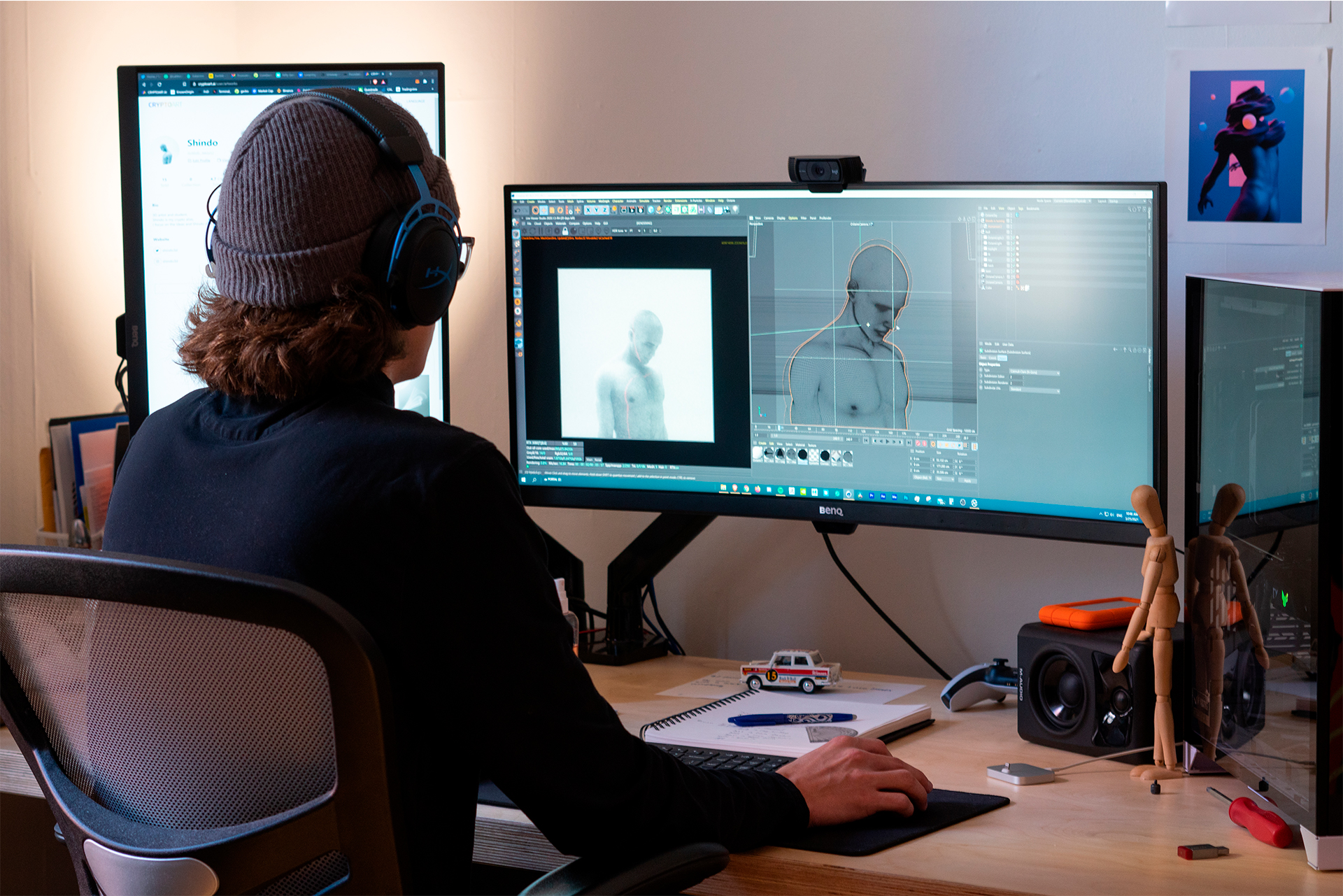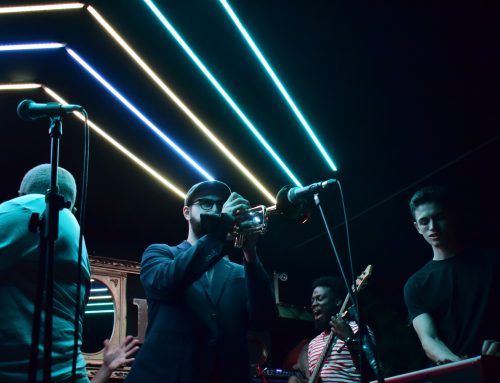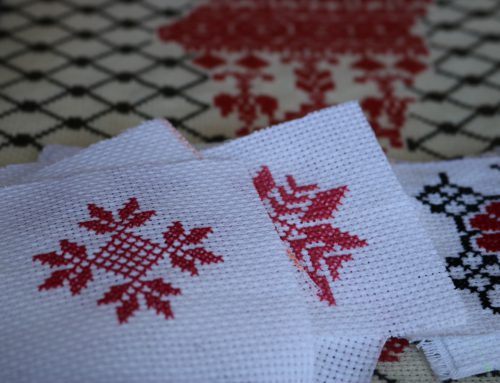BY Sandrine Ouellet & Esteban Cuevas
White buildings pierce a fog that prevents one from seeing far ahead and form a city that looks cryptographic because of its texture. This mysteriously-lit scene is called New Foundations. This artwork was purchased from 3D artist Félix Bossé by Chicago collector Anesti Dhima, better known as The Alchemist in the cryptoart community. However, it was not purchased with Canadian or American dollars, but with the cryptocurrency Ether (ETH).
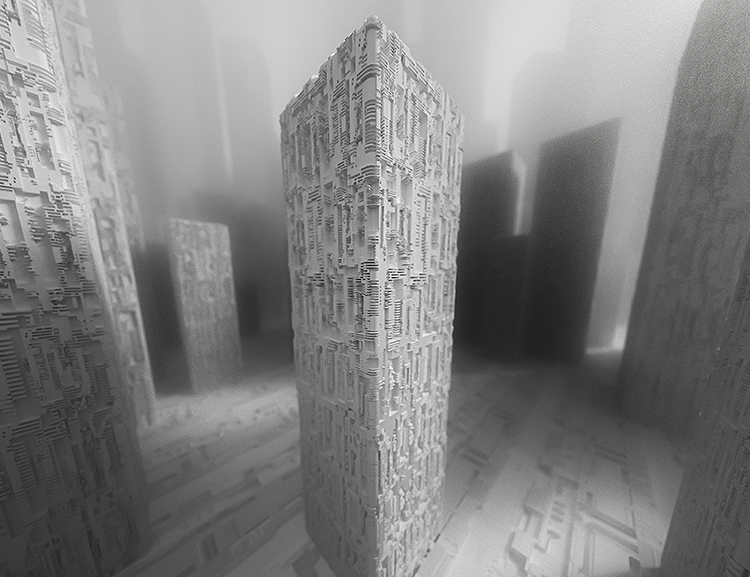
New Foundations, artwork created by Félix Bossé and purchased by Anesti Dhima on the cryptoart platform Foundation. Photo by Sandrine Ouellet.
Cryptoart uses blockchain technology to create a non-fungible token (NFT) to make the work impossible to copy. The blockchain is a database where the data is stored in blocks that are chronologically chained.
The majority of cryptoart platforms use Ethereum, which is an open-source software platform based on the blockchain. It creates a contract between a seller and a buyer that can’t be interfered with by a third party. Through these smart contracts, people can own something unique: The NFT.
Dhima collects artworks on cryptoart platforms. What he originally saw as a simple investment has evolved into a true appreciation of art.
“I think my collection is an evolution of me,” he says. “Starting from bidding purely for what I think would gain financial value overtime to bidding on things that I enjoy and I like. It’s also an art in itself, the collection, it’s just a representation of the collector just like the art is the representation of the artist.”
Montreal 3D artist Julien Lafortune recently joined the Crypto Art trend. This is how he and other digital artists are selling their artwork. Video by Esteban Cuevas.
Cryptoart has been around for a few years but has only recently seen a spike in its popularity. Félix Bossé became interested in the phenomenon in December 2020 when a friend told him about it. The artist has succeeded in carving out a place for himself on platforms such as Foundation and KnowOrigin, which operate through invitations. In three months, he sold 16 of his 20 works, some of which had multiple editions, on three different platforms.
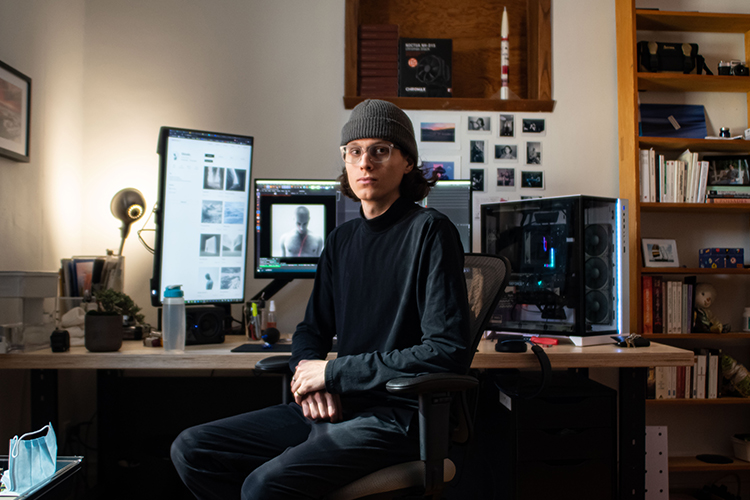
Félix Bossé, 3D artist from Montreal, in front of his work desktop in his apartment. He recently started selling his artwork on different bidding websites, allowing him to make a living out of his digital work. Montreal, 25 March. Photo by Esteban Cuevas.
The goal of the network is to decentralize itself from the traditional powers and to be democratic. Even the smallest artists can find a place there because the standards are not the same as in traditional art. The notion of entrepreneurial art is encouraged.
“I never felt that much pride in my life, I’ve been making art for a long time and the recognition I get from this project in the cryptoart community means everything to me,” says Bossé, who was able to quit his part-time job.
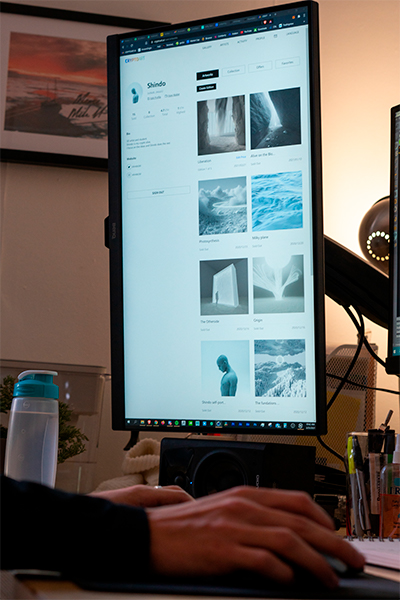
The artworks of Félix Bossé under his alias Shindo on the cryptoart selling platform Crytoart.Ai. Photo by Sandrine Ouellet.
Christine Blais had been part of the art scene for almost a decade before returning to school in 2017 to study the digital component, focusing on cryptoart. She says the phenomenon responds to a new way of consuming art by a new generation.
“It is not so much the possession of a artwork that is important as, for example, going to an exhibition, living an experience, taking a picture in front of an artwork, sharing it on Instagram,” says Blais while referring to people having their collection in their phone with the possibility to show it to anyone. “That’s it. It’s the experience economy.”
Cryptoart offers many possibilities to the art world.
“What it means to have cryptoart isn’t so much a question of security, it’s a question of opening up new kinds of markets that are more democratic,” explains William Robinson, an expert in blockchain risk management at Catallaxy. “Cheaper artworks can work in ways that bigger artworks used to and all the questions around ownership, capitalisation, sort of markets and even future markets can be built around these tokens.”
The traditional art world and its market are starting to take an interest in cryptoart. Ellephant Gallery will be hosting an NFT video exhibit in their windows at night this summer.
“[Cryptoart] probably won’t look like […] that in five years but, that concept, I think there is no going back, especially for all the digital artists,” says Samuel Arsenault-Brassard, co-curator of virtual art for the Ellephant and Art Mûr galleries. The artists on these platforms earn a royalty on the second market which is not the case on the traditional art market in Canada.
“I think it’s so good for the artists that they would never want to go back,” says Arsenault-Brassard. “That concept is just too precious for us now. It’s really a transition period for everybody involved and there are a lot of people that don’t believe in it and criticize it.”
[slide-anything id=”5214″]Despite the benefits, there are some things about this industry that need to be improved. This popularization has slowed down the ethereum blockchain because of the many NFTs and smart contracts created. The ethereum blockchain can process approximately 15 transactions per second for the entire world. This has increased the costs, called gas fee, to process the transactions. This process consumes a lot of energy. Energy consumption, forging possibilities and legal implications are examples of things that need to be improved. “Now, with cryptoart, it’s trickier because there’s this connection off the chain. We’ve left maths, pure maths, and we now have the messy reality of the world bleeding in. So, you need to know what actual rights and obligations you are getting,” Robinson says.
One of the nice things about cryptoart is the strong and supportive community. “I think it’s part of the reason I am still so engaged,” says Dhima. “I love to see the reaction, I love to see the support, the engagement. […] There’s a genuine appreciation on all sides and the collectors are just as part of the community as the artist. It’s all one big crypto appreciative community of financiers and creatives.” Artists and collectors connect on Twitter. Collectors encourage artists to reply to their tweets with their work and artists give each other insights. “I built some of the biggest connections I had on the Internet in the last two months,” says Bossé, who helped create a group chat with many other Montreal artists to help them on their cryptoart journey.
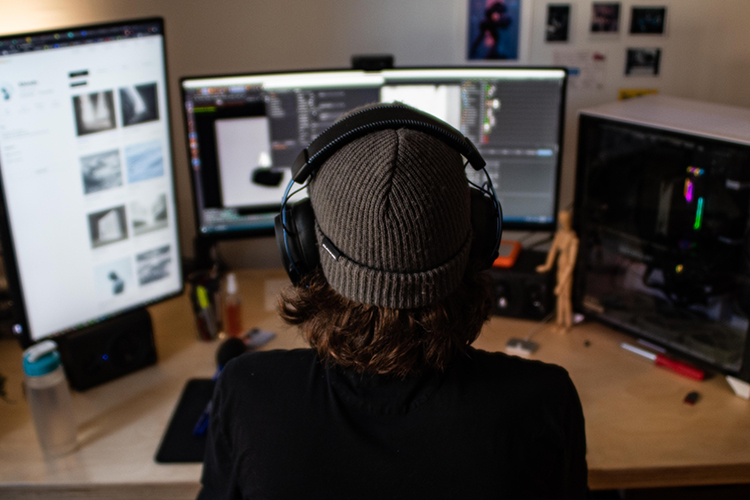
3D artist Félix Bossé working on a project. Photo by Esteban Cuevas.
Digital art makes up a huge portion of the type of art that sells on cryptoart platforms which has allowed it to shine.
“In my opinion, it’s an evolution of conceptual art and net art since the 80s, adapted to a technology that is current and is in demand by collectors for their democratizing and community characteristics as well,” says Blais. “There’s a return to the social values of encouraging artists, of having a direct connection.”
Bossé believes that this evolution is finally a big step towards the recognition that digital art deserves. Learning 3D softwares and finding your place in the digital art realm is really hard and should get as much attention as the traditional art market, if not more if we think about where we are and what we use on a daily basis,” says Bossé.
